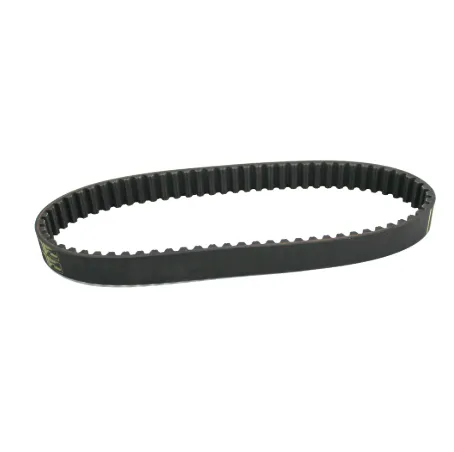Importance of Synchronous Belts
In today’s fast-paced industrial world, the efficiency and longevity of machinery are paramount. A key component in achieving smooth and reliable operation is the synchronous belt wheel. This part, integral to many mechanical systems, ensures precise synchronization between two or more rotating components. By offering consistent power transfer and reducing slippage, the synchronous belt wheel is a cornerstone of machinery that requires accurate and dependable performance.

A synchronous belt wheel works by engaging with a corresponding toothed belt to deliver synchronized motion. Its teeth lock into the belt’s corresponding grooves, ensuring there is no slippage, which is essential for systems that demand high precision. These belt wheels are commonly used in applications where exact timing and power transmission are crucial, such as in conveyor systems, robotics, and automotive engines. By understanding how the synchronous belt wheel operates and its role in different systems, you can see its importance in maintaining the overall efficiency of mechanical systems.
Exploring the Different Synchronous Belt Types
When it comes to choosing a synchronous belt, there are several synchronous belt types to consider, each designed for specific applications. These belts vary in materials, construction, and tooth profiles, allowing them to meet the diverse needs of industries ranging from automotive to industrial machinery.
Some common synchronous belt types include the timing belt, the V-belt, and the flat belt. Each type has its unique advantages depending on the system requirements. For example, timing belts with reinforced teeth are ideal for systems requiring high torque transmission without slippage. On the other hand, V-belts are more suitable for applications where there is a need for increased grip, such as in machinery with variable loads.
The material of the synchronous belt is also an essential factor. Synchronous belts made from high-strength materials like rubber, polyurethane, or neoprene offer superior durability and resistance to wear, ensuring a long service life. Additionally, belts with metal or fiberglass reinforcements can handle even the most extreme operating conditions, providing reliable performance for heavy-duty applications.
Choosing the right synchronous belt types is crucial for ensuring optimal performance and reducing the risk of frequent failures, ultimately saving time and money on repairs.
Synchronous Drive Belt Replacement: When and Why It's Necessary
A crucial aspect of maintaining machines with synchronous belts is performing synchronous drive belt replacement at the right time. Over time, belts can wear out due to exposure to friction, high temperatures, or environmental factors. Regular maintenance schedules and timely replacements are essential to keep systems running smoothly.
The need for synchronous drive belt replacement typically arises when there are signs of belt degradation such as cracking, fraying, or noticeable wear on the teeth. Neglecting to replace a worn-out belt can result in malfunctioning machinery, reduced performance, and, in extreme cases, costly breakdowns. It is recommended to inspect the belt regularly and replace it as part of a proactive maintenance strategy to avoid unexpected downtime and costly repairs.
When replacing the synchronous drive belt, it is crucial to ensure that the replacement belt is compatible with the system’s specifications. Factors such as the belt’s width, length, and material should match the original belt’s requirements for optimal performance. Additionally, using a synchronous drive belt that meets the manufacturer’s quality standards ensures that the system continues to run at peak efficiency.
Synchronous Belt vs Timing Belt: What's the Difference?
When it comes to power transmission systems, the terms synchronous belt vs timing belt are often used interchangeably, but they refer to slightly different types of belts, each with its specific advantages and uses. Understanding the distinctions between the two is essential for selecting the right belt for your system.
A synchronous belt refers to a belt that operates with teeth that mesh with the grooves of a toothed pulley, ensuring precise timing between the belt and the pulley. It is commonly used in applications where accurate synchronization is required, such as in robotics or conveyor systems.
On the other hand, a timing belt is a type of synchronous belt, but with a particular focus on power transmission within automotive engines and similar systems. Timing belts feature teeth that fit into the pulley’s grooves to ensure that the camshaft and crankshaft in an engine are synchronized. This synchronization is critical to engine timing and ensures the engine operates smoothly.
The main difference lies in their applications: synchronous belts are generally used in a broader range of machinery, while timing belts are more specific to engine systems. However, both types of belts serve the same basic function of providing precise and reliable power transmission without slippage, making them invaluable in many industries.
Maintaining the Performance of Synchronous Belts and Wheels
To ensure long-term performance and reliability, it’s important to regularly maintain both the synchronous belt and its corresponding synchronous belt wheel. Proper alignment, tension, and cleanliness are critical to the system's efficiency and can help prevent premature wear or failure of the components.
One key maintenance task is to check the alignment of the synchronous belt wheel and belt. Misalignment can cause the belt to wear unevenly, leading to reduced performance and the need for premature replacement. Additionally, ensuring the correct tension in the belt is crucial for proper operation. If the tension is too high or too low, it can affect the system's power transfer efficiency and lead to unnecessary strain on the components.
Understanding the role of the synchronous belt wheel, the different synchronous belt types, and how to maintain and replace these components is essential for ensuring optimal machine performance. Whether it's choosing between a synchronous belt vs timing belt or replacing a worn-out drive belt, being proactive about maintenance can save you time and money while maximizing the efficiency of your machinery.








